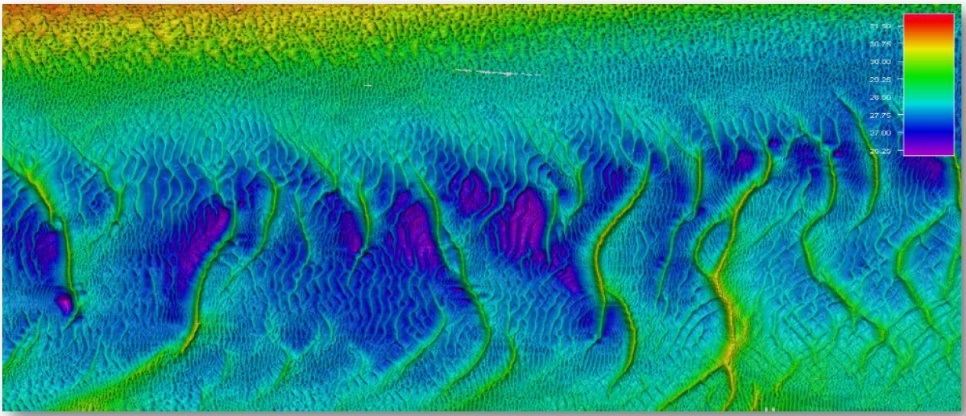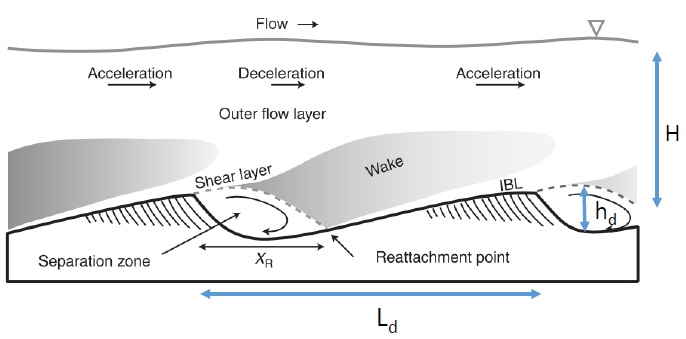10 juillet – SEMI-TWIST Christian Winter: Shapes and Effects of Estuarine Bedforms

On Wednesday, July 10, Prof. Dr. Christian Winter, the head of the Coastal Geology and Sedimentology working group at the Institute of Geosciences at Kiel University, delivered an intriguing seminar on the “Shapes and Effects of Estuarine Bedforms.” His talk provided a deeper understanding of the importance of studying these seabed features and the environmental and economic issues associated with their presence in estuaries.

Bedforms are geological features that develop at the interface of fluid and a movable bed due to the movement of bed material by fluid flow. They not only help us reconstruct the past state of their environment but can also present navigational hazards and potential threats to pipelines, cables, and offshore constructions. Additionally, estuaries are places of interaction between different processes and systems, making them habitats for complex ecosystems.
Bedforms are usually present in regions of tidal currents, such as the German Bight. Over the years, dunes can also migrate in the direction of the tidal phase. A great example is Hamburg Bay, where the system is flood-dominant, leading to sediment accumulation.
Maintenance dredging is a common method used to remove bedforms in bays. Significant investments are made in this field to facilitate the development of the marine economy, such as accommodating larger ships. However, excessive deepening and narrowing required for bigger ships can significantly alter conditions in these shallow water environments, causing regime shifts. For example, in the Elbe River, dredging has drastically increased turbidity, preventing light from penetrating the water column.


The efficiency of dredging in solving the problem itself is questionable. For instance, a 850 million euro investment in removing bedforms ended unsuccessfully, as tidal effects caused dunes to migrate back to the bay soon after, highlighting the lack of cost-benefit advantages. The Elbvertiefung (Elbe deepening) protests in Hamburg underscored the importance of considering environmental, economic, social, and legal concerns.
One of the missions of Christian Winter’s research is to deepen the understanding of the impacts of dredging and its actual efficiency, as well as to improve numerical models simulating bedforms. Dunes are often represented in a very simplified, triangular way. Modeling the effect of asymmetric bedforms can help better simulate real conditions.

Anna, on behalf of the students from the University at Sea
 Attention, vous utilisez un navigateur peu sûr !
Attention, vous utilisez un navigateur peu sûr !